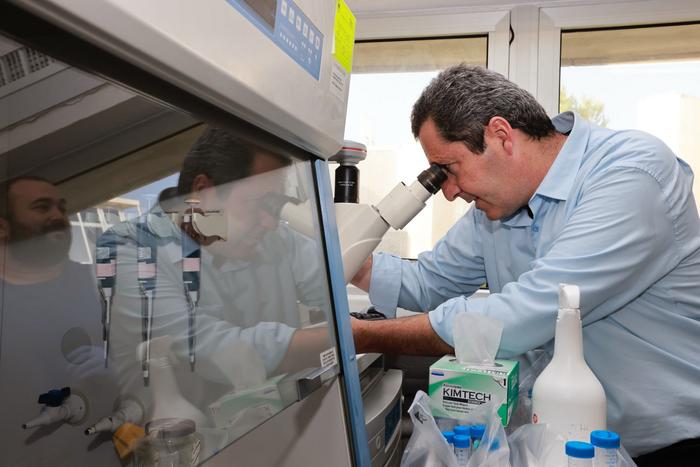Researchers at the Hebrew University of Jerusalem have developed a revolutionary process that could dramatically reduce the cost of producing cultivated meat, potentially bringing this sustainable protein source to mainstream consumers. The study, published in Nature Food, demonstrates a continuous manufacturing method that addresses major hurdles in scalability and cost-effectiveness.
From Science Fiction to Supermarket Reality?
Cultivated meat, also known as lab-grown or cell-based meat, has long been touted as a potential solution to the environmental and ethical concerns surrounding conventional animal agriculture. However, high production costs have kept this technology out of reach for most consumers.
Professor Yaakov Nahmias, founder of Believer Meats and lead researcher on the project, explained the inspiration behind their approach: “We were inspired by how Ford’s automated assembly line revolutionized the car industry 110 years ago. Our findings show that continuous manufacturing enables cultivated meat production at a fraction of current costs, without resorting to genetic modification or mega-factories.”
The team’s innovative process uses tangential flow filtration (TFF) to continuously grow and harvest animal cells. This method achieved impressive results:
– Cell densities of up to 130 billion cells per liter
– Biomass yields of 43% weight per volume
– Continuous operation for 20 days with daily harvests
Perhaps most critically, the researchers developed an animal component-free culture medium that costs just $0.63 per liter. This addresses one of the most significant cost barriers in cultivated meat production.
Crunching the Numbers: A Path to Cost Parity
Using data from their experiments, the team conducted a techno-economic analysis of a hypothetical 50,000-liter production facility. Their calculations suggest that cultivated chicken could potentially be produced for as little as $6.20 per pound – a price point competitive with organic chicken in many markets.
Dr. Elliot Swartz, Principal Scientist at the Good Food Institute, emphasized the significance of these findings: “This important study provides numerous data points that demonstrate the economic feasibility of cultivated meat. The study confirms early theoretical calculations that serum-free media can be produced at costs well below $1/L without forfeiting productivity, which is a key factor for cultivated meat achieving cost-competitiveness.”
It’s important to note that this $6.20 per pound figure represents the production cost, not the final retail price. Factors such as packaging, distribution, and profit margins would impact the price consumers ultimately pay. However, this research demonstrates a clear path toward making cultivated meat economically viable on a large scale.
Why It Matters:
The potential impact of affordable, widely available cultivated meat extends far beyond the dinner plate:
1. Environmental sustainability: Conventional livestock farming is a major contributor to greenhouse gas emissions, deforestation, and water pollution. Cultivated meat could significantly reduce these impacts.
2. Animal welfare: This technology could dramatically reduce the number of animals raised for food production.
3. Food security: As the global population grows and climate change threatens traditional agriculture, cultivated meat offers a more efficient way to produce protein.
4. Public health: Removing live animals from the meat production process could reduce the risk of zoonotic diseases and antibiotic resistance.
5. Economic opportunity: The cultivated meat industry could create new jobs and drive innovation in biotechnology and food science.
Bruce Friedrich, President of The Good Food Institute, praised the open nature of this research: “GFI applauds the spirit of openness that continues to characterize cultivated meat researchers like Dr. Koby Nahmias and his colleagues, who understand that showing the scientific potential of cultivated meat will benefit all scientists working in the field.”
While cultivated meat products are not yet widely available, this research brings us significantly closer to seeing them on supermarket shelves. As global demand for animal protein is expected to double by 2050, innovations like this continuous manufacturing process could play a crucial role in creating a more sustainable and ethical food system.
The next steps will involve scaling up this technology and navigating regulatory approvals in various countries. If successful, we may soon have the option to enjoy meat products that are identical at the cellular level to conventional meat, but with a fraction of the environmental impact.


